Standard [CURRENT]
ASTM D 7847:2022
Standard Guide for Interlaboratory Studies for Microbiological Test Methods
- Publication date
- 2022
- Original language
- English
- Pages
- 9
- Publication date
- 2022
- Original language
- English
- Pages
- 9
- DOI
- https://dx.doi.org/10.1520/D7847-22
Product information on this site:
Quick delivery via download or delivery service
Buy securely with a credit card or pay upon receipt of invoice
All transactions are encrypted
Short description
1.1 Microbiological test methods present challenges that are unique relative to chemical or physical parameters, because microbes proliferate, die off and continue to be metabolically active in samples after those samples have been drawn from their source. 1.1.1 Microbial activity depends on the presence of available water. Consequently, the detection and quantification of microbial contamination in fuels and lubricants is made more complicated by the general absence of available water from these fluids. 1.1.2 Detectability depends on the physiological state and taxonomic profile of microbes in samples. These two parameters are affected by various factors that are discussed in this guide, and contribute to microbial data variability. 1.2 This guide addresses the unique considerations that must be accounted for in the design and execution of interlaboratory studies intended to determine the precision of microbiological test methods designed to quantify microbial contamination in fuels, lubricants and similar low water-content (water activity <0.8) fluids. 1.3 This standard does not purport to address all of the safety concerns, if any, associated with its use. It is the responsibility of the user of this standard to establish appropriate safety, health, and environmental practices and determine the applicability of regulatory limitations prior to use. 1.4 This international standard was developed in accordance with internationally recognized principles on standardization established in the Decision on Principles for the Development of International Standards, Guides and Recommendations issued by the World Trade Organization Technical Barriers to Trade (TBT) Committee.
ICS
07.100.01,
75.100
DOI
https://dx.doi.org/10.1520/D7847-22
Also available in
Loading recommended items...
Loading recommended items...
Loading recommended items...
Loading recommended items...

